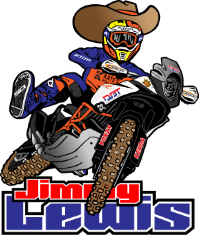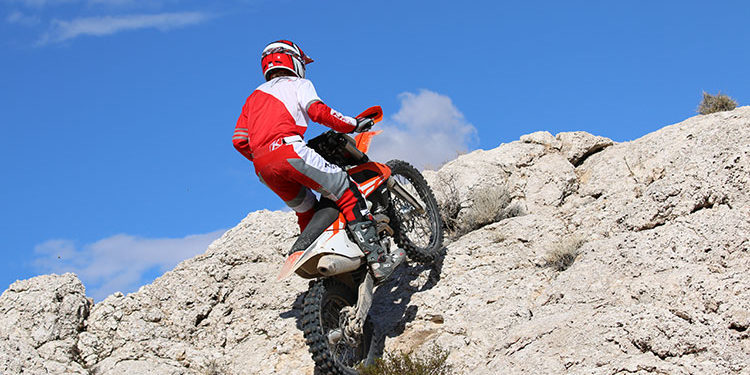Uphills can be a challenge for a lot of riders when in reality they are not that big of a deal. In fact if you look at the bright side, uphills are easier to slow down on, make the ground easier to touch on one side if you turn the bike and also make it easier to bump-start the bike if you stall. The incline tends to instill fear in riders.
In reality, nothing changes when riding on an uphill as long as you have good basic command of the skill set you need to ride on level ground. Being balanced is the first, and foremost thing. Get out of balance and things start to go wrong no matter where you are but on uphills for some reason riders are afraid to stop. Out of balance and not stopping usually results in a crash, plain and simple.
The second thing is traction. The steeper the incline the more weight will be put on the rear tire, usually better for traction, but it will require more power to push the bike and rider up the hill. Being aware of how much the tire will grab and when it is spinning become pretty important. Usually once spinning most riders will not back off to regain traction and they keep spinning. Spinning like this is fine till the tire suddenly and often unexpectedly grabs traction (and the rider is typically out of balance at this point too) then ugly things happen. Having the right momentum before being on the hill can help cure this; waiting till you are on the hill to get on the gas is a bad technique. Higher level riders also know how to keep the tire spinning just enough to never suddenly, grab traction but not enough so that it doesn’t grab any.

Body positioning is also very simple. The rider needs to be balanced and light on the handlebar allowing the bike to move underneath them. This body position usually means the bars and front of the bike will come up closer to the rider. You do not want to get pushed back by the bike and end up pulling on the handlebar. Your body position should remain parallel with gravity taking into consideration your forward speed. Yes, this means over the front of the bike. Most of the time, unless you are on very smooth ground, you’ll want to be standing on the pegs and steering the bike through the pegs by initiating turns. Your hands and arms should be loose except for the small bursts of energy needed to get the bike back in balance and back in line with where you want to go. Do not pull on the bars, rather use the throttle to lighten the front end if needed.
If the hill has bumps, roots, rocks or turns in it, you need to treat then just like you would on level ground. That means you have to be able to slow down, loft the front tire, change lines, avoid bad spots, stay loose and active on the bike and yes, even stop if needed. For some reason, just the fact that the incline of the ground has changed riders tend to throw out common sense and just gas it and hope for the best.

The best way to practice uphills is to ride up them. Taking on steeper and steeper hills with more speed isn’t going to do much. The better method is to learn to ride up increasingly difficult hills slower and slower. Learning to stop and restart on hills, getting a feel for traction, and the clutch and throttle control needed to keep traction, will help at any speed, but is most difficult going slower than first gear. Later practicing all the same techniques that you practice on flat ground now on inclines will get you accustomed and comfortable being on an unlevel surface. As you get to steeper and steeper hills and even onto ledges, you have to take steps so you don’t get intimidated and, in fact, can even envision what it will take to get you over the top.
Our schools focus on giving you the basic techniques that need to be honed to an advanced level so you can conquer any riding situation. It isn’t the advanced techniques that mess riders up; it is messing up the basics while trying something advanced that causes the problems. Remember the best modification you can do to your bike is putting a better rider on it.








